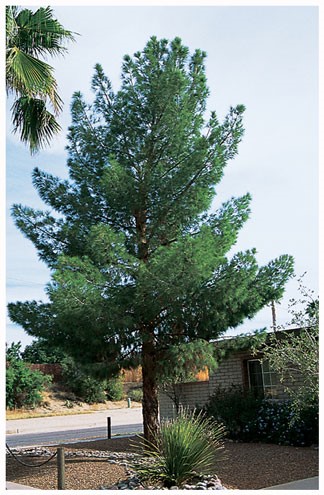 Afghan Pine Likes full or partial shade - A fast growing evergreen tree and can be used as border landscaping. Can grow up to 80ft. tall and 30ft. wide. Low water once established. Also called Mondell Pine. Zone 6-10
Afghan Pine Likes full or partial shade - A fast growing evergreen tree and can be used as border landscaping. Can grow up to 80ft. tall and 30ft. wide. Low water once established. Also called Mondell Pine. Zone 6-10

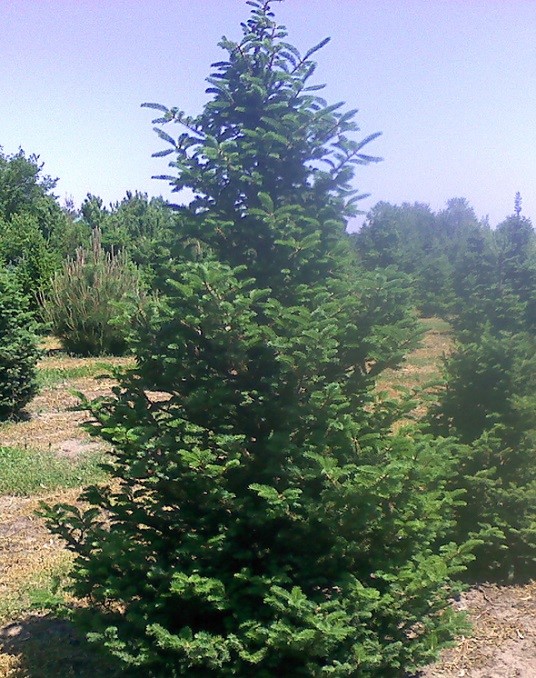 The Balsam Fir is located in Northeast US; Nice aroma, good needle retention, short, soft, deep green needles; medium to fast growth rate; prefers full to partial sun; tolerates a variety of soils; often grown for Christmas trees, ornamentals, and timber. Zone 2-4
The Balsam Fir is located in Northeast US; Nice aroma, good needle retention, short, soft, deep green needles; medium to fast growth rate; prefers full to partial sun; tolerates a variety of soils; often grown for Christmas trees, ornamentals, and timber. Zone 2-4
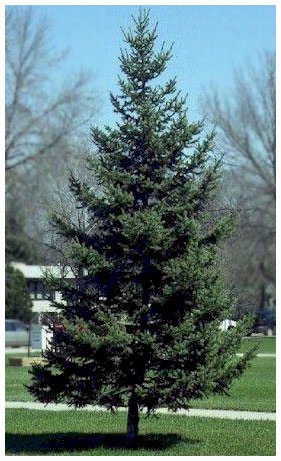 Black Hills Spruce Has short blue-green needles; medium growth rate; prefers full to partial sun; does best in moist soils but is tolerant of a variety of soils; often grown for timber or wildlife. Zone 2-5
Black Hills Spruce Has short blue-green needles; medium growth rate; prefers full to partial sun; does best in moist soils but is tolerant of a variety of soils; often grown for timber or wildlife. Zone 2-5
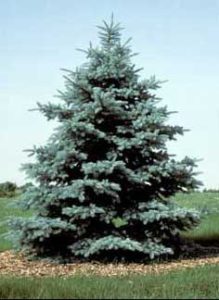
Colorado Blue Spruce The Colorado Blue Spruce, our most popular species, is a hardy, adaptable tree with short needles; slow growth rate; prefers full to partial sun; does best in moist, well drained soils, but is tolerant of other soils. Zone 3-7
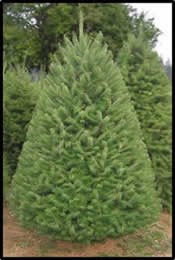 Douglas Fir Selected for its compact shape and good Christmas tree characteristics; slow growth rate, needs full sun, is tolerant of a variety of soils but does not do well in wet soils; often grown for Christmas trees, ornamentals and timber. Zone 4-6
Douglas Fir Selected for its compact shape and good Christmas tree characteristics; slow growth rate, needs full sun, is tolerant of a variety of soils but does not do well in wet soils; often grown for Christmas trees, ornamentals and timber. Zone 4-6
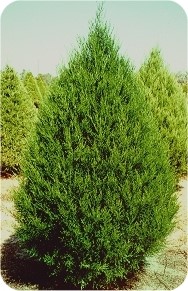 Eastern Red Cedar Native to the Midwest. Tolerant of most soil types and weather conditions. An excellent windbreak tree with moderate to fast growth rate. Will grow in full sun to partial shade. Zone 2-9.
Eastern Red Cedar Native to the Midwest. Tolerant of most soil types and weather conditions. An excellent windbreak tree with moderate to fast growth rate. Will grow in full sun to partial shade. Zone 2-9.
Fraser fir, Abies fraseri, is the iconic Christmas Tree. With its soft, blue-green needles and stong central leader, the also make a great accent tree. They don't do well in heavy clay soils, but prefer hillsides and well drained soils. They retain their needles well after being cut, which makes them an excellent choice for live cut Christmas trees. Zone 4-6
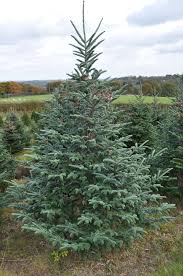
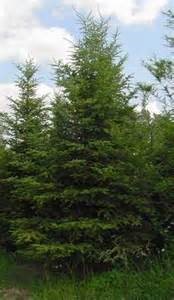 The Grand fir's very rich, woodsy fragrance signals Christmas is in the air. Smooth, flexible needles up to 1 ½ inch in length grow in two distinct rows to give the Grand a silky, feathery appearance. The top surface of the needles is a fresh, dark green, with a variegated white and green underside, which gives the trees their unique coloring. Grand Firs are very dense and naturally symmetrical.
The Grand fir's very rich, woodsy fragrance signals Christmas is in the air. Smooth, flexible needles up to 1 ½ inch in length grow in two distinct rows to give the Grand a silky, feathery appearance. The top surface of the needles is a fresh, dark green, with a variegated white and green underside, which gives the trees their unique coloring. Grand Firs are very dense and naturally symmetrical.
Grand fir grows in the Pacific Northwest and is very popular in the Rocky Mountain regions of Idaho, Montana, Wyoming and Colorado. Zone 7-8
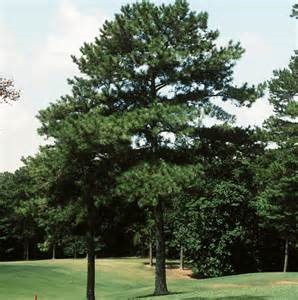 Loblolly Pine is a large evergreen tree that reaches heights of 90' to 110'. The leaves are needle-like, 4" to 9" long, and borne in fascicles of three. They have a slight bluish-green tinge, are stiff, and sometimes slightly twisted. Zone 6-9.
Loblolly Pine is a large evergreen tree that reaches heights of 90' to 110'. The leaves are needle-like, 4" to 9" long, and borne in fascicles of three. They have a slight bluish-green tinge, are stiff, and sometimes slightly twisted. Zone 6-9.
Meyer Spruce Picea meyeri- The Meyer Spruce can withstand a wide range of temperatures. Soft uniform blue-green color, medium growth rate; is tolerant of shade, tolerates a wide range of soil conditions and is very drought tolerant. Zones 2-8
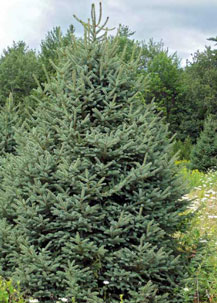
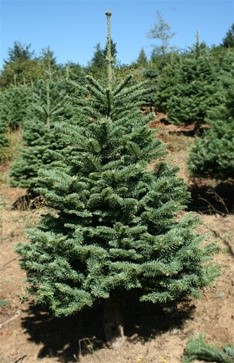 Noble Fir The noble fir has most certainly earned its name, particularly because it is the largest native fir in North America. This tall, narrow tree features a long, columnar trunk and conical crown with short, nearly horizontal branches. It is a long-lived pioneer tree, meaning that it often comes in aggressively after a disturbance such as fire. And because of its quality and strength, the wood of the noble fir is valued over the wood of other true firs.
Noble Fir The noble fir has most certainly earned its name, particularly because it is the largest native fir in North America. This tall, narrow tree features a long, columnar trunk and conical crown with short, nearly horizontal branches. It is a long-lived pioneer tree, meaning that it often comes in aggressively after a disturbance such as fire. And because of its quality and strength, the wood of the noble fir is valued over the wood of other true firs.
A subalpine tree, it is found in the Cascade Range and the Coast Ranges of the Pacific Northwest of Washington and Oregon and in southwestern Canada. Trees with cone and needle characteristics of noble fir, however, have been reported in northern California. Zone 4-8
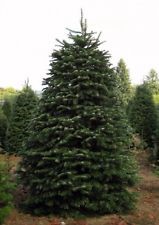 Nordmann fir is a very full tree in terms of both branches and foliage. The needles display a dark, green, glossy upper-surface with a contrasting silvery white under-surface. The needles are flat with rounded tips, and grow in symmetrical rows circling around the branch. The Nordmann fir has excellent needle retention that makes it a great choice for any climate. Its light scent makes it a desirable species for consumers with allergies.
Nordmann fir is a very full tree in terms of both branches and foliage. The needles display a dark, green, glossy upper-surface with a contrasting silvery white under-surface. The needles are flat with rounded tips, and grow in symmetrical rows circling around the branch. The Nordmann fir has excellent needle retention that makes it a great choice for any climate. Its light scent makes it a desirable species for consumers with allergies.
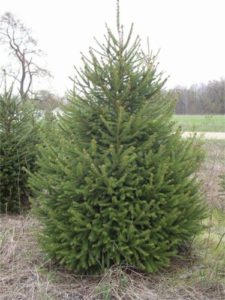
Norway Spruce Has dark green draping branches; fast growth rate; prefers full to partial sun; does best in moist, well drained soils; often grown for timber, shelter belts, wildlife, and ornamentals. Zone 3-7
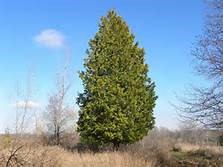 White Cedar - tiny, scaled shaped needles on fan shaped sprays, slow growth rate; prefers full to partial sun; does best in well drained soils, will grow on saturated soils, swamps; often planted for wildlife. Zone 3-7
White Cedar - tiny, scaled shaped needles on fan shaped sprays, slow growth rate; prefers full to partial sun; does best in well drained soils, will grow on saturated soils, swamps; often planted for wildlife. Zone 3-7
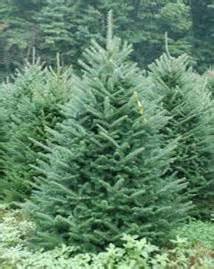 White Spruce grows moderate – Fast. White Spruce a beautiful tree and a very good choice for accent trees or windbreaks. It tends to keep its conical shape and is less likely to produce multiple leaders than other spruces as it matures. It is very tolerant of both drought and wet conditions and can thrive with more shade than most conifers. It is an excellent substitute for Colorado Spruce or any of the pines. Its more narrow growth habit makes it an excellent choice for smaller yards and tighter spaces. The wood of the white spruce is commonly used in both building materials and the making of musical instruments. Due to its tight branching, the White Spruce is a favorite nesting site for many songbirds. Zone 2-7
White Spruce grows moderate – Fast. White Spruce a beautiful tree and a very good choice for accent trees or windbreaks. It tends to keep its conical shape and is less likely to produce multiple leaders than other spruces as it matures. It is very tolerant of both drought and wet conditions and can thrive with more shade than most conifers. It is an excellent substitute for Colorado Spruce or any of the pines. Its more narrow growth habit makes it an excellent choice for smaller yards and tighter spaces. The wood of the white spruce is commonly used in both building materials and the making of musical instruments. Due to its tight branching, the White Spruce is a favorite nesting site for many songbirds. Zone 2-7
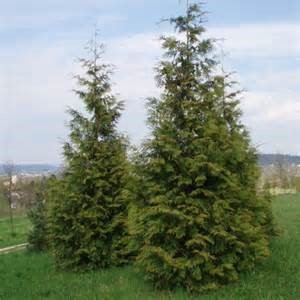 The Western Red Cedar is very commonly found in the wild in the northwestern United States and Canada. In cultivation, it can be effectively used as a hedge or screen. Foliage is glossy, green and scale-like and is aromatic. The bark is reddish brown and sheds. Foliage may turn brownish bronze in winter. Can be grown close to buildings and in open spaces, it can be an excellent skyline tree. Growing 50-60 feet Zone 6-8
The Western Red Cedar is very commonly found in the wild in the northwestern United States and Canada. In cultivation, it can be effectively used as a hedge or screen. Foliage is glossy, green and scale-like and is aromatic. The bark is reddish brown and sheds. Foliage may turn brownish bronze in winter. Can be grown close to buildings and in open spaces, it can be an excellent skyline tree. Growing 50-60 feet Zone 6-8
